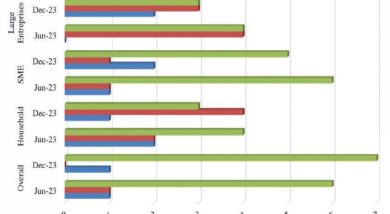Cyclone Idai impact to widen trade gap
Tropical Cyclone Idai, which hit the country in March this year, will impact the country’s current account as imports will surge due to recovery and reconstruction activities, the World Bank has said.
The Bretton Woods institution said this in its latest Malawi Economic Monitor (MEM) titled Charting a New Course launched in Lilongwe last week.

Before the cyclone hit the country, the current account deficit was expected to narrow from 10.9 percent of gross domestic product (GDP) in 2018 to 9.5 percent in 2019, but the report said with the impact, the deficit is expected to widen further to 10 percent.
Reads the report: “Imports are expected to increase due to recovery and reconstruction activities. Increased external financing is expected to finance much of the recovery-related imports.”
The current account deficit is the net balance of trade, and a country is said to have a trade surplus if its exports exceed its imports and a trade deficit occurs when its imports surpass its exports.
A 2018 Malawi Government Annual Economic Report shows that in 2017, Malawi’s total exports were valued at K847 billion against imports valued at K1.7 trillion, leaving a gap of K920 billion.
On post-recovery disaster needs, a World Bank report estimates resources worth $368.3 million (about K276 billion) as recovery financing required to resume production and access to goods and services, restore governance and decision-making processes to implement risk reduction measures.
However, the widening further of the current account as projected by the bank this year frustrates the country’s efforts to realise import-substitution, a government aspiration which seems to be far from reality.
The recent review of the National Export Strategy I, implemented between 2013 and 2018, revealed that the strategy’s performance was under-par with regard to increasing exports and reducing import as the trade gap remains wide.
The strategy failed to meet its long-term goal of raising exports as a share of imports from 51.5 percent in 2011 to 75.5 percent in 2017.
Trade analysts also blame the country’s poor showing on exports performance on failure to utilise various market preferences offered under different trade agreements such as the European Union Everything But Arms initiative, the Cotonou Agreement and its successor Economic Partnership Agreement (EPA), the United States’ African Growth and Opportunity Act.




